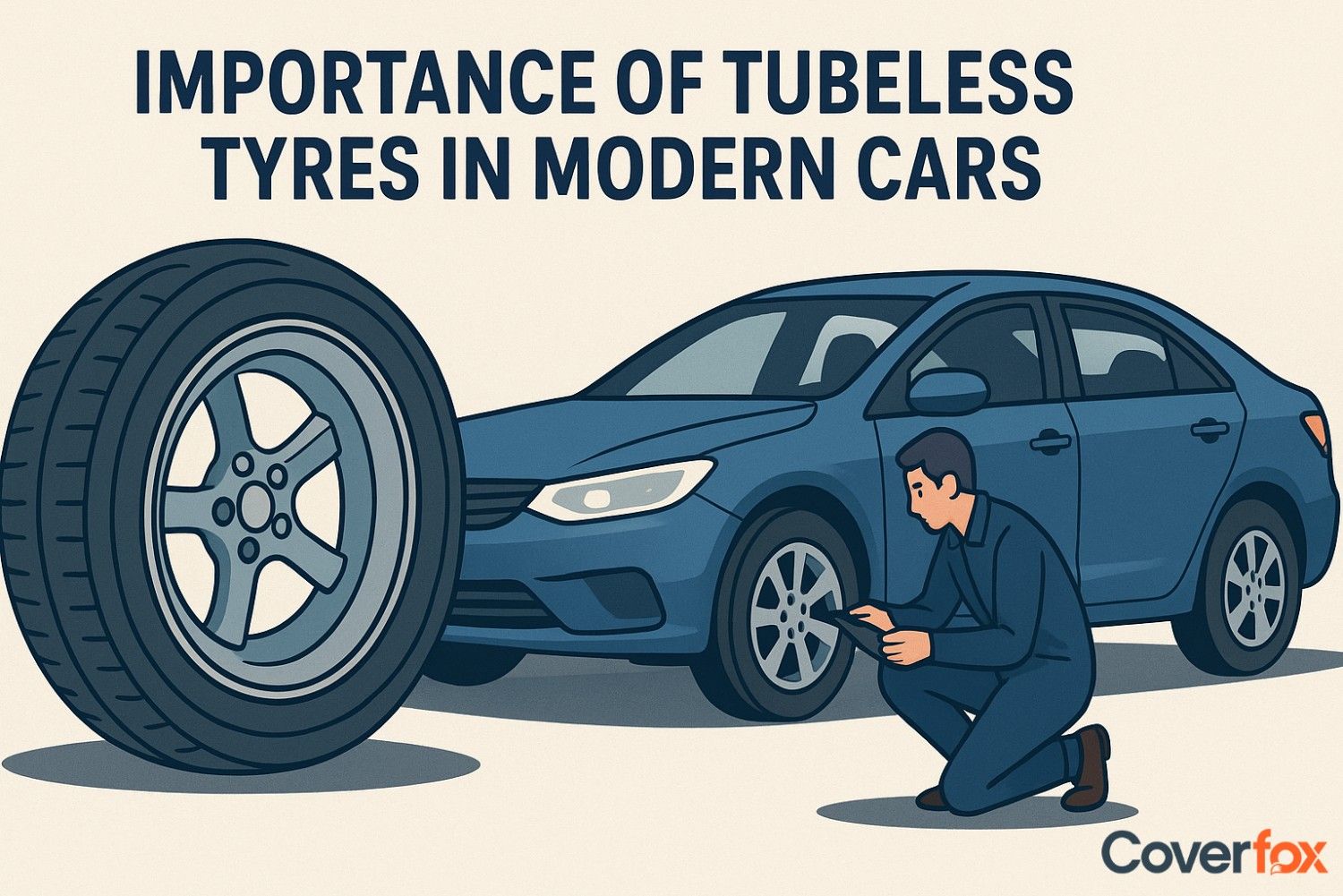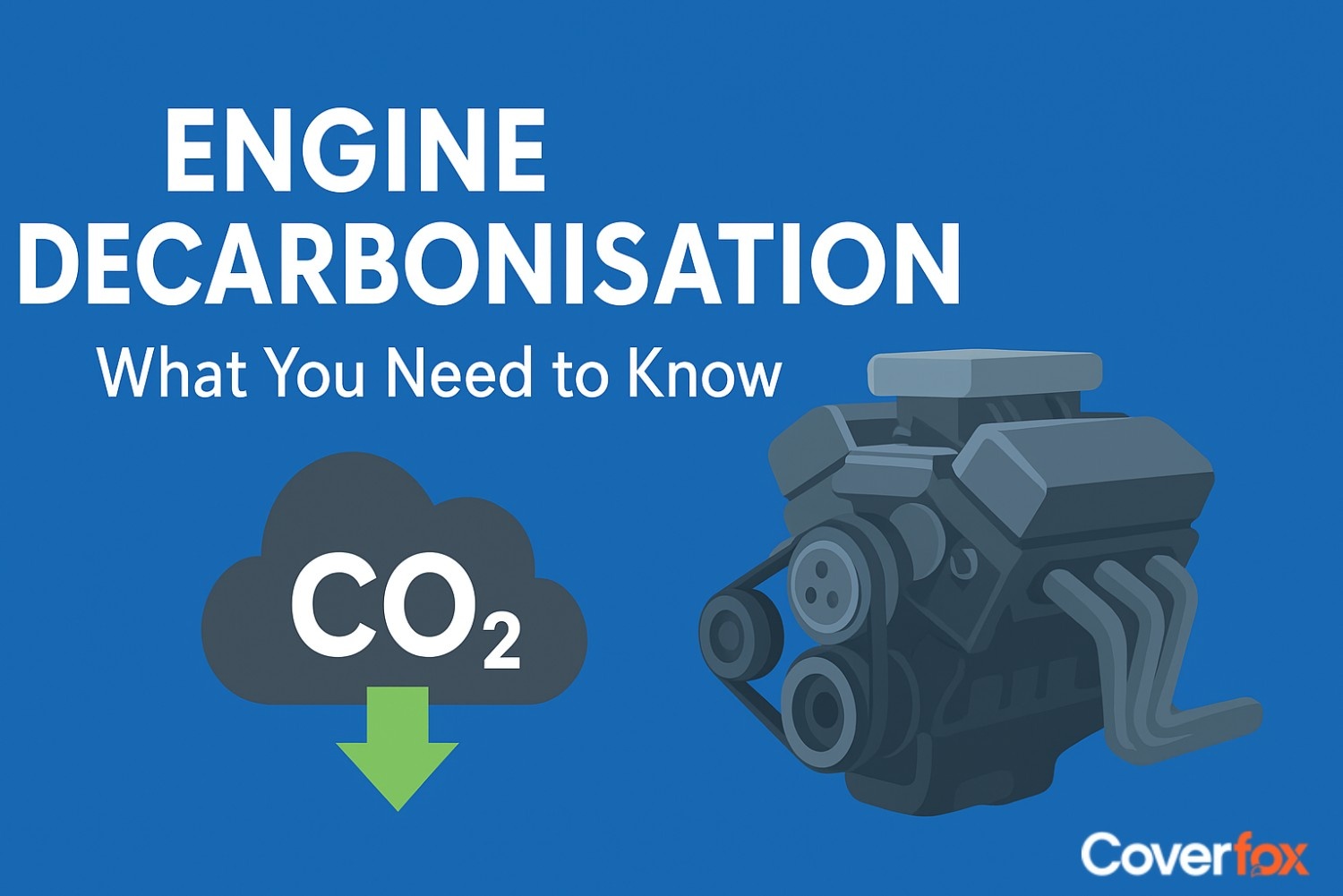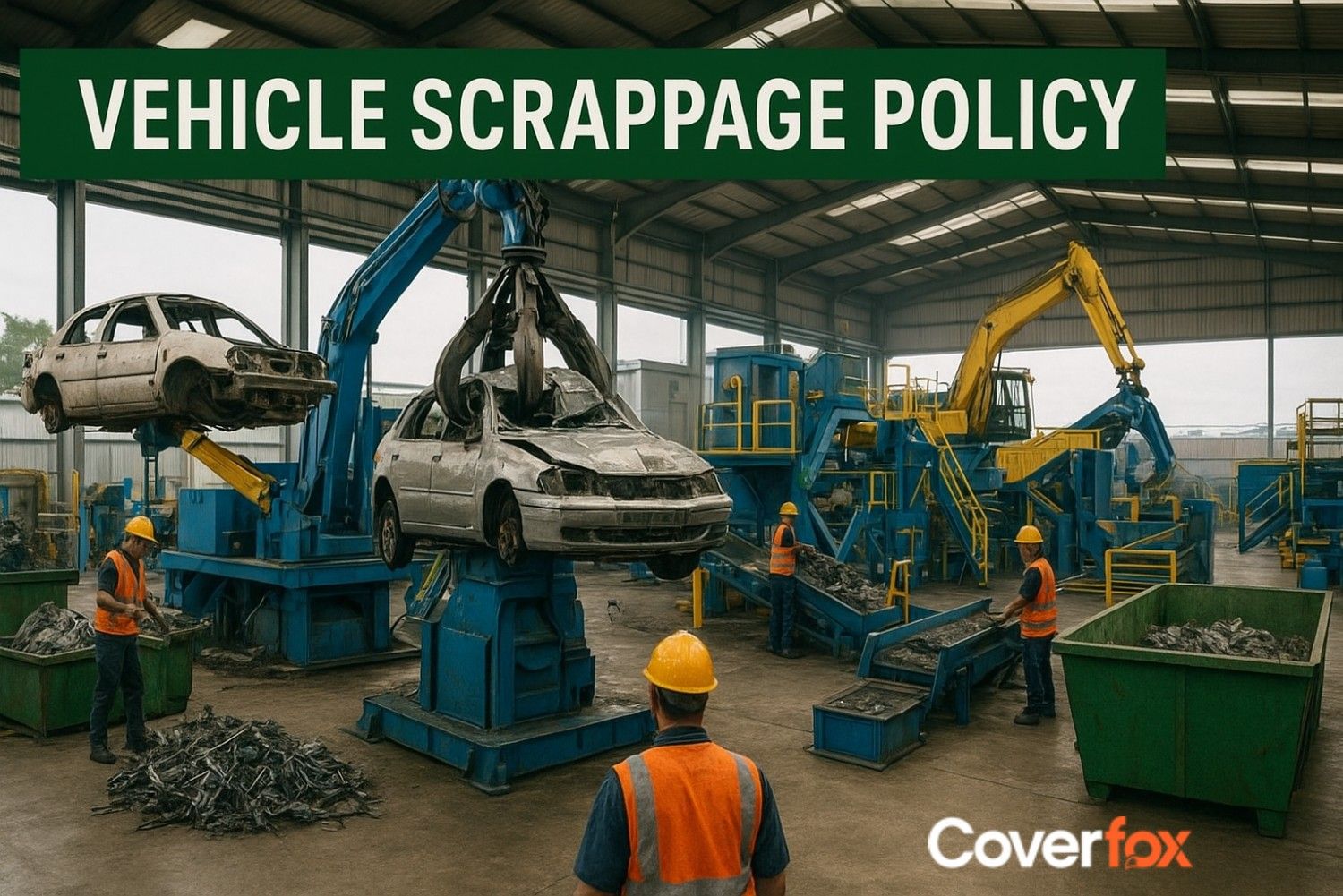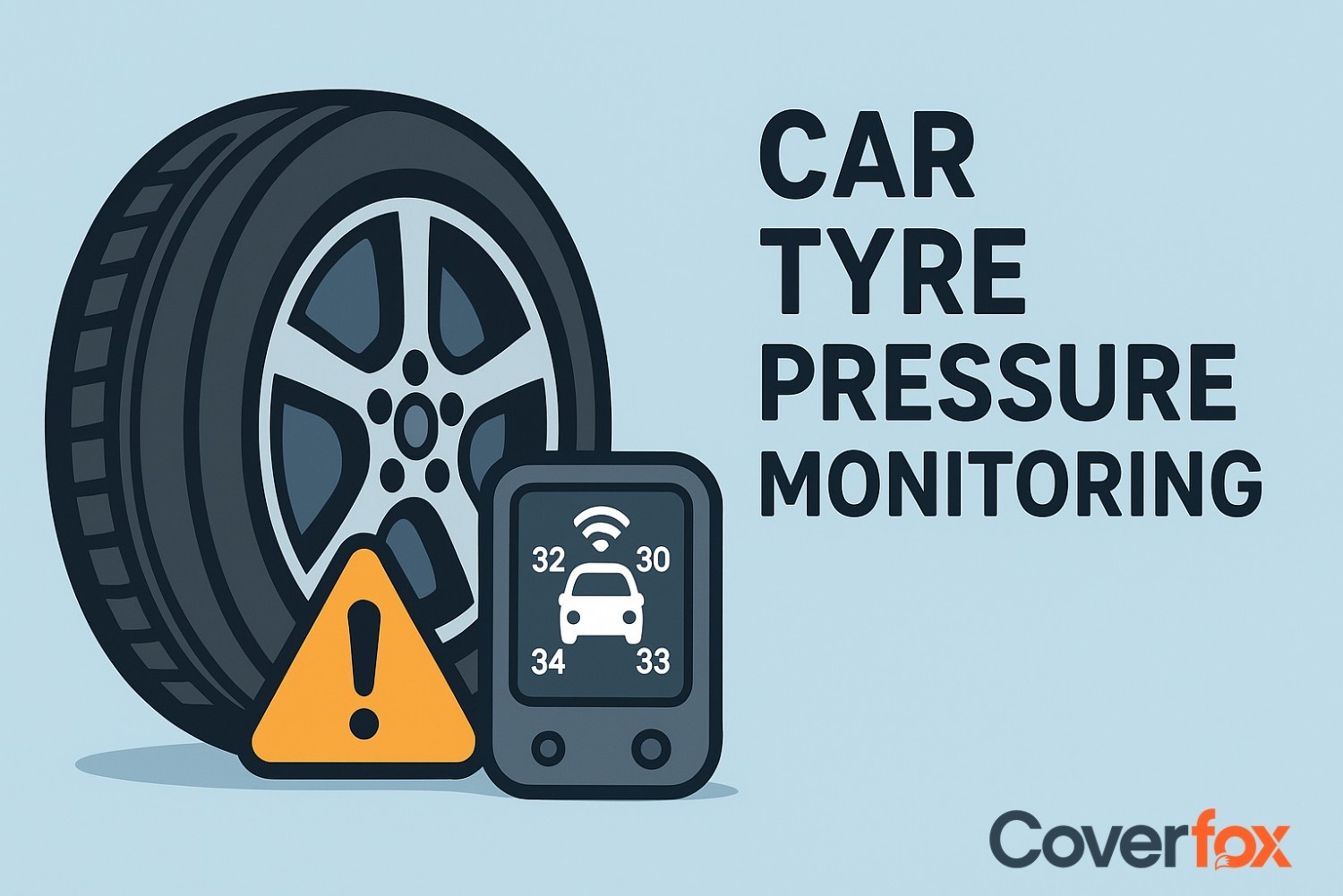Tubeless tyres eliminate the need for an inner tube by sealing air directly between the tyre and rim, reducing puncture risks and improving heat dissipation. They enhance safety, fuel efficiency, and ride comfort while supporting modern systems like alloy wheels, TPMS, ABS, and ESC. Their durability, easy maintenance, and reliability make them ideal for Indian road conditions and modern vehicles.

While selecting tyres for your car, you may be presented with multiple options – out of which the name “tubeless tyres” must have come across as one of the most common and used types. The global tubeless tyre market is projected to grow significantly, with the market value expected to reach between $282.90 billion and $367 billion by 2031 (As per Market Research). So, what exactly are these tubeless tyres, and how do they differ from traditional and tube tyres? Read along to get the answer to that question and understand why tubeless tyres are essential for modern cars.
What Are Tubeless Tyres?
Tubeless tyres are designed without an inner tube, where the air is contained directly between the tyre and the rim, creating an airtight seal. They use liquid sealants that automatically fill small punctures, preventing sudden air loss. This enhances safety by reducing the risk of blowouts, improves handling with better heat dissipation, and lowers maintenance compared to traditional tube tyres.
Why Modern Cars Prefer Tubeless Tyres
Modern cars prefer tubeless tyres for their superior safety, performance, and compatibility with advanced vehicle technologies.
Enhanced Safety
Better Fuel Efficiency & Comfort
Seamless Fit with Alloy Wheels
Supports TPMS Functionality
Optimised for ABS & ESC
Easy Maintenance
Self-sealing design prevents sudden air loss, reducing blowout risks and improving stability.
Lower rolling resistance enhances mileage, while improved heat dissipation ensures smoother rides.
Creates an airtight seal for better balance, handling, and efficiency.
Maintains steady air pressure, enabling accurate tyre pressure monitoring and early leak detection.
Provides consistent grip and air retention, helping advanced braking and stability systems perform effectively.
Simple puncture repair without removing the tyre from the rim.
Key Differences: Tubeless vs Tube Tyres
Tubeless and tube tyres differ mainly in their construction, safety, and maintenance, influencing how they perform on modern vehicles.
| Feature | Tubeless Tyres | Tube Tyres |
|---|---|---|
| Construction | Air is sealed directly between the tyre and the rim; no inner tube is used | Contains a separate inner tube to hold air |
| Puncture Handling | Sealant can automatically fix small punctures | Air escapes rapidly when punctured |
| Safety | Reduced blowout risk due to gradual air loss | Higher blowout risk with sudden deflation |
| Maintenance | Easier to repair minor leaks without removing the tyre | Requires removing the tyre to fix punctures |
| Performance | Better heat dissipation and stability | Generates more heat and less stability at high speeds |
| Fuel Efficiency | Lower rolling resistance improves mileage | Higher rolling resistance reduces efficiency |
| Cost | Slightly higher initial cost but longer lifespan | Cheaper initially, but needs more frequent maintenance |
Major Benefits of Tubeless Tyres
Tubeless tyres offer multiple advantages over traditional types of tyres that enhance safety, efficiency, and driving comfort, making them the preferred choice for modern cars.
Improved Safety
Better Fuel Efficiency
Ease of Repair
Longer Lifespan
Superior Ride Comfort
Compatible with Modern Systems
Their self-sealing design minimises the risk of sudden air loss, reducing blowout chances and ensuring stable control.
Lower rolling resistance allows the engine to work less, improving mileage and reducing fuel consumption.
Small punctures can be quickly sealed with liquid sealant or repaired externally without removing the tyre.
Reduced friction and better heat dissipation lead to slower wear and extended tyre life.
Consistent air pressure and balanced weight distribution deliver smoother, more stable rides.
Works seamlessly with alloy wheels, TPMS, ABS, and ESC, supporting optimal performance and safety.
Safety Aspects of Tubeless Tyres
Tubeless tyres enhance safety by maintaining gradual air loss during punctures, reducing the risk of sudden blowouts and accidents. Their airtight seal improves handling and stability, especially at high speeds or during sharp turns. In case of damage, emergency sealants offer quick temporary repairs, allowing safer travel until proper servicing.
Tubeless Tyres Performance and Technology
Tubeless tyres enhance driving performance by offering better grip, stability, and braking control, especially during high-speed cornering or on uneven roads. Their flexible sidewalls absorb shocks from potholes, ensuring smoother rides and greater comfort. Improved heat dissipation boosts durability and fuel efficiency, making them reliable even in challenging conditions.
Maintenance Tips for Tubeless Tyres
Proper maintenance of tubeless tyres ensures safety, longer lifespan, and consistent performance on every drive.
1. Check Tyre Pressure Regularly
Maintain recommended air pressure for optimal handling and fuel efficiency.
2. Inspect for Punctures or Damage
Look for embedded objects or slow leaks and address them promptly.
3. Rotate Tyres Periodically
Ensures even wear and extends overall tyre life.
4. Clean the Valve and Rim
Prevents dust and debris from affecting the airtight seal.
5. Use Quality Sealant
Replace or refill tyre sealant as advised by the manufacturer for effective puncture protection.
6. Avoid Overloading
Excess weight increases heat and wear, reducing tyre durability.
Why Tubeless Tyres Matter in India
Tubeless tyres are especially valuable for Indian driving conditions, offering durability, safety, and convenience on diverse terrains.
Better for Rough Roads
Enhanced Safety
Low Maintenance
Fuel Efficiency Advantage
Ideal for Modern Cars
Handle potholes, uneven surfaces, and debris without frequent punctures.
Gradual air loss prevents sudden blowouts, vital for highway and city traffic.
Easier puncture repair and longer lifespan reduce frequent workshop visits.
Lower rolling resistance helps save fuel during long commutes.
Perfectly suited for vehicles with alloy wheels, TPMS, ABS, and ESC systems.
Final Thoughts
Tubeless tyres represent a major leap forward in automotive safety, comfort, and performance. By eliminating the inner tube, they reduce puncture risks, improve heat management, and enhance overall stability. Their compatibility with modern systems like ABS and TPMS ensures safer, more efficient driving, while easier maintenance and better fuel economy make them a practical upgrade. Switching from tube-type tyres to tubeless ones not only elevates driving comfort but also enhances passenger safety and long-term vehicle reliability. And to stay truly protected on the road, pairing your car with a comprehensive car insurance policy ensures financial safety against unexpected damages or accidents.
Articles to Read:
Types of Tyres: A Guide to Choosing the Right One
Complete Guide to the Average Car Dimensions
Car Axles: Function, Importance and How They Work
Frequently Asked Questions
What makes tubeless tyres better than tube tyres?
Tubeless tyres offer improved safety, better heat dissipation, lower rolling resistance, and easier puncture repair compared to tube tyres.
Is it worth getting tubeless tyres?
Yes, they provide longer life, enhanced comfort, and reduced maintenance costs, making them a worthwhile investment.
Do tubeless tyres improve fuel efficiency?
Yes, their lower rolling resistance reduces engine strain, improving overall mileage and fuel economy.
Are tubeless tyres safer on highways?
Absolutely. They prevent sudden air loss during punctures, lowering the risk of blowouts at high speeds.
Can I repair a tubeless tyre myself?
Minor punctures can be temporarily fixed using a tubeless tyre repair kit or sealant until professional servicing.
Do tubeless tyres need special rims?
They work best with alloy or tubeless-compatible steel rims that maintain an airtight seal.
How long do tubeless tyres last?
With proper care, they can last 50,000 to 80,000 km, depending on driving conditions and maintenance.
Are tubeless tyres good for all cars?
Yes, most modern cars are designed for tubeless tyres, offering better compatibility with advanced safety systems.
Do I still need to check tyre pressure regularly?
Yes, regular pressure checks are essential to maintain performance, safety, and fuel efficiency, even with tubeless tyres.





